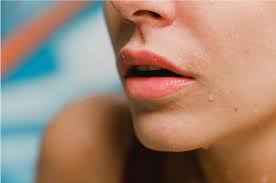
bumps can affect anyone, regardless of age or skin type. In this article, we will explore the various causes of zits on the lip line, discuss effective treatment options, and provide tips for prevention.
What Are Zits?
Zits, commonly referred to as pimples or acne, are a type of skin lesion that occurs when hair follicles become clogged with oil, dead skin cells, and bacteria. While acne can appear on various parts of the body, it is most commonly associated with the face, including the lip line. These lesions can range in size and severity, from small whiteheads to larger, inflamed cysts.
Causes of Zits on the Lip Line
1. Hormonal Changes
Hormonal fluctuations can significantly impact skin health. During puberty, menstruation, pregnancy, or menopause, increased levels of hormones such as androgens can lead to an overproduction of sebum (oil) in the skin. This excess oil can clog pores around the lip line, leading to the formation of zits.
2. Poor Hygiene
Maintaining proper hygiene is crucial for healthy skin. Neglecting to wash the face regularly or failing to remove makeup before bed can contribute to the buildup of dirt, oil, and bacteria on the skin. This buildup can lead to clogged pores, particularly around the sensitive area of the lip line.
3. Diet
Certain dietary choices may exacerbate acne. Consuming high amounts of sugar, dairy, and processed foods can trigger inflammation in the body, leading to increased oil production and the formation of zits. Additionally, a diet lacking in vitamins and minerals can impair the skin’s ability to repair itself.
4. Stress
Stress is a known contributor to various skin issues, including acne. When the body experiences stress, it releases cortisol, a hormone that can stimulate oil production in the skin. This increased oiliness can lead to clogged pores and zits, particularly around the lip line.
5. Skincare Products
The products we use on our skin can significantly affect its health. Some skincare and cosmetic products contain comedogenic (pore-clogging) ingredients that can lead to breakouts. Using heavy lip balms, lipsticks, or creams that are not suitable for your skin type can contribute to the formation of zits on the lip line.
6. Allergic Reactions
In some cases, zits on the lip line may be a result of an allergic reaction to specific products or ingredients. This reaction can cause inflammation and irritation, leading to the formation of bumps or pimples. Identifying and avoiding allergens can help prevent these types of breakouts.
7. Bacterial Infections
Bacteria play a significant role in the development of acne. The presence of the bacteria Propionibacterium acnes can lead to inflammation and pus-filled lesions. Zits on the lip line may be caused by bacterial infections, particularly if there are open wounds or irritations in that area.
8. Cystic Acne
Cystic acne is a severe form of acne characterized by deep, painful bumps beneath the skin’s surface. While cystic acne can appear anywhere on the body, it may manifest on the lip line as well. This condition often requires professional treatment and can be challenging to manage on your own.
Treatments for Zits on the Lip Line
When it comes to treating zits on the lip line, several options are available, ranging from over-the-counter products to professional treatments. Here are some effective methods to consider:
1. Topical Treatments
a. Benzoyl Peroxide: This ingredient is commonly found in acne treatments. It works by killing bacteria, reducing inflammation, and unclogging pores. Apply a small amount to the affected area, but be cautious as it can cause dryness or irritation.
b. Salicylic Acid: Known for its exfoliating properties, salicylic acid helps to clear clogged pores and reduce inflammation. It is often found in cleansers and spot treatments.
c. Retinoids: Topical retinoids, such as tretinoin or adapalene, can help prevent clogged pores by promoting skin cell turnover. These are more potent treatments and may require a prescription.
2. Oral Medications
For more severe cases, oral medications may be necessary. These can include:
a. Antibiotics: Oral antibiotics can help reduce inflammation and bacteria in the body, leading to clearer skin.
b. Hormonal Treatments: For individuals with hormonal acne, hormonal therapies like birth control pills may help regulate hormones and reduce breakouts.
c. Isotretinoin: This powerful medication is reserved for severe acne cases and requires close monitoring by a dermatologist due to potential side effects.
3. Professional Treatments
In some instances, seeking professional help may be the best option. Dermatologists can offer a range of treatments, including:
a. Chemical Peels: These involve applying a chemical solution to exfoliate the skin, unclogging pores and reducing inflammation.
b. Laser Therapy: Laser treatments can target bacteria and reduce oil production in the skin, leading to clearer skin over time.
c. Extraction: A dermatologist can safely extract cysts or pimples, reducing the risk of scarring and infection.
Preventing Zits on the Lip Line
While it may not be possible to eliminate zits entirely, several preventive measures can help minimize their occurrence:
1. Maintain Good Hygiene
Establish a consistent skincare routine that includes cleansing your face twice daily. Use a gentle cleanser to remove dirt, oil, and makeup, particularly around the lip line.
2. Choose Non-Comedogenic Products
When selecting skincare and cosmetic products, look for those labeled as non-comedogenic, meaning they won’t clog pores. This is especially important for lip products, as they can often contribute to breakouts.
3. Manage Stress
Incorporate stress-management techniques into your daily routine, such as yoga, meditation, or regular exercise. These practices can help regulate hormones and reduce the likelihood of stress-induced breakouts.
4. Eat a Balanced Diet
A well-balanced diet rich in fruits, vegetables, whole grains, and lean proteins can support healthy skin. Try to limit processed foods and sugar, which can trigger inflammation and breakouts.
5. Stay Hydrated
Drinking plenty of water helps keep the skin hydrated and supports its overall health. Hydration can aid in maintaining a healthy oil balance, reducing the likelihood of clogged pores.
6. Avoid Touching Your Face
Regularly touching your face can transfer bacteria and oils from your hands to your skin, increasing the risk of breakouts. Be mindful of habits such as resting your chin on your hand or frequently touching your lips.
7. Regular Exfoliation
Exfoliating the skin helps remove dead skin cells that can clog pores. Consider using gentle exfoliating products or tools to keep your skin clear, but be cautious not to over-exfoliate, which can irritate the skin.
When to Seek Professional Help
If zits on the lip line become persistent, painful, or lead to scarring, it’s essential to consult a dermatologist. They can provide a proper diagnosis and recommend appropriate treatments tailored to your skin type and condition. Additionally, if you notice unusual changes in your skin or experience severe inflammation, it’s crucial to seek medical attention.
Conclusion
Zits on the lip line can be a common and frustrating skin issue, but understanding their causes and implementing effective treatment and prevention strategies can help manage and minimize breakouts. By maintaining good hygiene, choosing the right products, and addressing underlying hormonal or dietary factors, individuals can improve their skin health and boost their confidence. Always remember, however, that if acne persists or worsens, professional guidance is essential for effective management.





